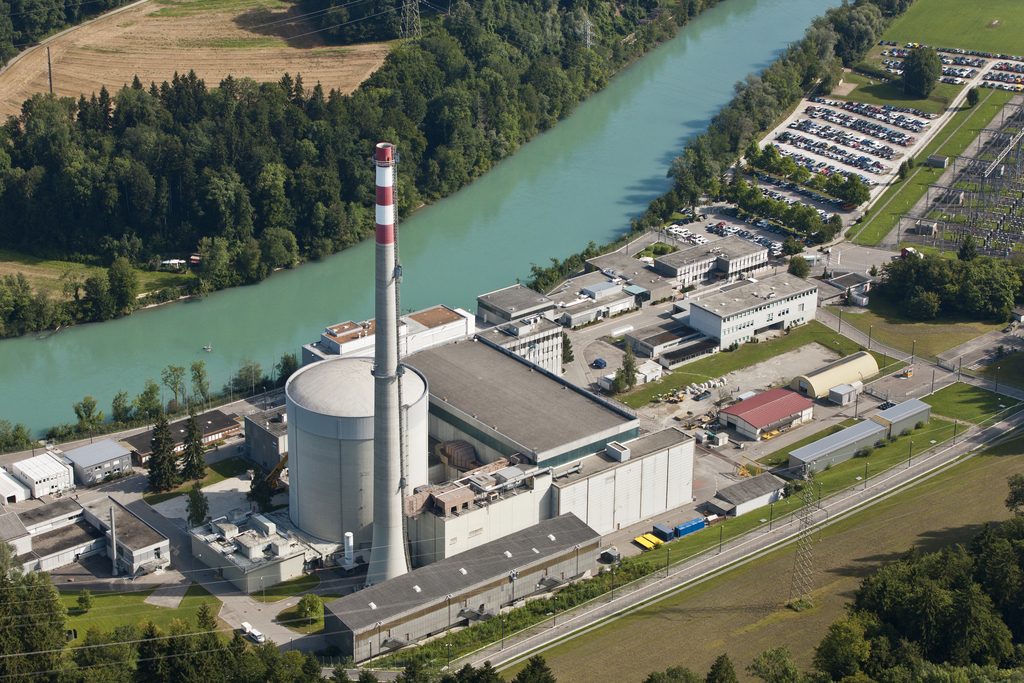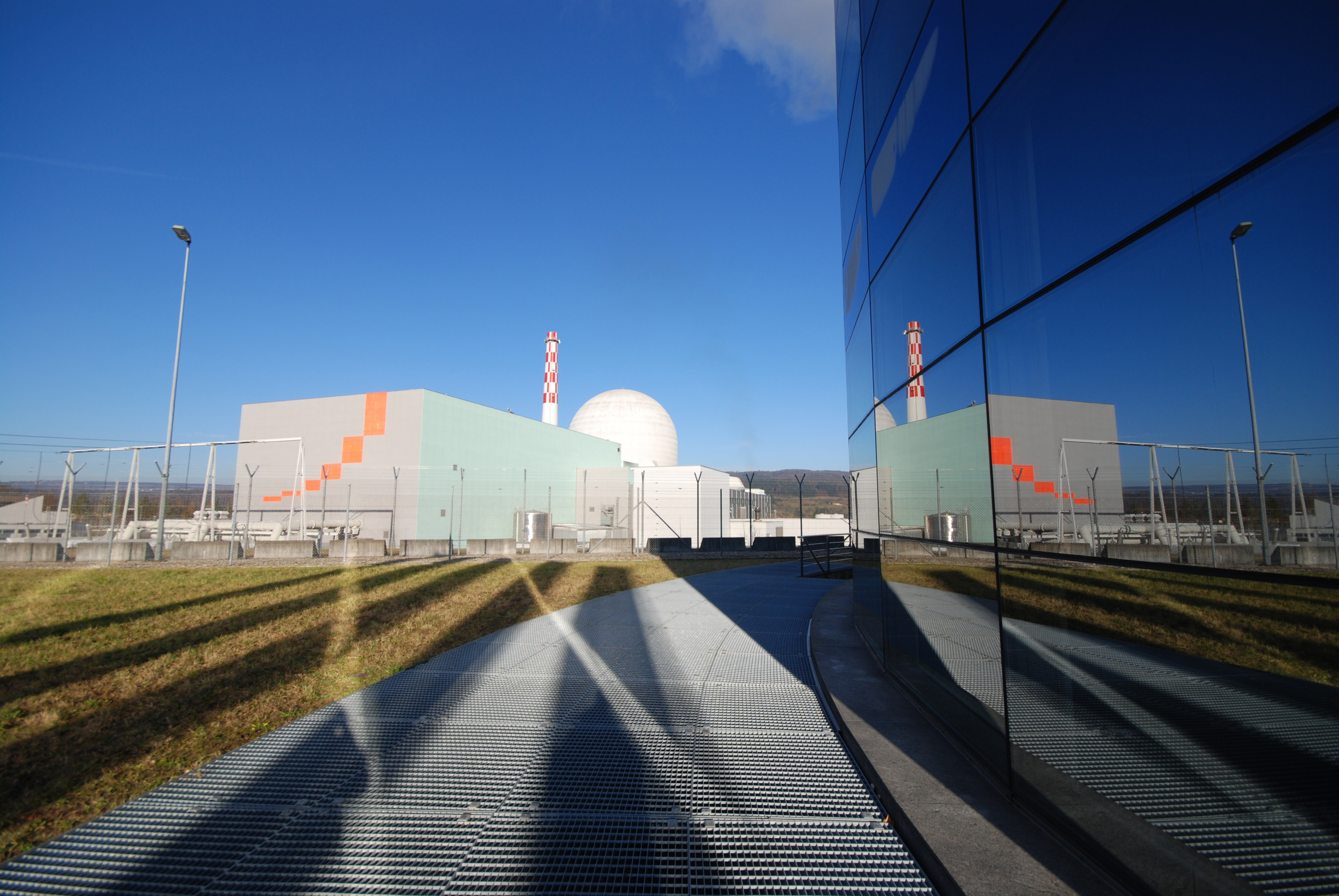Nuclear phase-out poised to take shape
When should nuclear power be phased out? How much hydro-, solar and wind power will Switzerland need in the future and what are the potential savings? These are some of the key energy questions Swiss parliamentarians must grapple with this week in Bern.
Switzerland’s future energy policy offers plenty for politicians to get their teeth into in the ongoing winter session. The cabinet has submitted a 40-page message to parliament for consideration and around 250 amendment requests have been lodged. This is the result of a year’s preparatory work by the parliamentary energy commission. A popular vote is also expected.
It is clear that the phasing out of nuclear energy and switch to renewable sources still has a long way to go. The cabinet’s most optimistic scenario foresees implementation in 2017 at the earliest.
Vision and rough planning
The government’s “Energy Strategy 2050” is a long-term vision that remains a rough plan, as many of its parameters, such as technologies, electricity prices and political positions, are subject to constant change.
In simple terms leftwing and Green parties want to accelerate the proposed energy revolution and phase out nuclear power as quickly as possible while increasing subsidies for new renewable energies.
On the other side, the centre-right Liberals and the rightwing Swiss People’s Party are trying to obstruct, or at least weaken, the government’s energy proposals. They want the longest possible lifetimes for existing nuclear power plants, no ban on nuclear technologies and fewer subsidies for solar and wind energy.
Switzerland is not energy self-sufficient and it is highly unlikely that electricity imports will be regulated by law in the near future.
Bone of contention: life of nuclear power stations
The new strategy is a consequence of the Fukushima nuclear disaster in Japan on March 11, 2011, which sent shockwaves throughout Switzerland. Only three days later Energy Minister Doris Leuthard suspended the general licences for the three planned nuclear power plants. At the end of May 2011, the cabinet decided to phase out nuclear power step-by-step. And in autumn 2011, parliament confirmed this move.
Phasing out step-by-step meant that all existing nuclear power plants would be shut down after a maximum operating period of 50 years. According to this rule, Switzerland’s newest nuclear power plant at Leibstadt, which was launched in 1984, would be shut down in 2034 and mark the end of nuclear power production in Switzerland.
Recently, this dramatic scenario has faded somewhat. The majority of the energy advisory committee backs extending the lifetimes of nuclear power plants by ten years as long as the plants meet the latest safety requirements.
“The possibility of extending the operating periods every ten years by ten years makes phasing-out a more distant dream. The risk of old plants having an accident will remain high,” criticises Jürg Buri, head of the Swiss Energy Foundation.
Meanwhile, in November 2012 the Green Party handed in the required number of signatures for a popular vote demanding all nuclear power plants to shut down after at least 45 years of operation.
Dropping electricity rates
At the other end of the political spectrum is the association ‘Action for a Reasonable Swiss Energy Policy (AVES)’.
“The situation on the energy market has changed significantly since the Fukushima incident,” says its president Albert Rösti, referring to the huge cut in electricity prices all over Europe, which is mainly due to the massive expansion of solar and wind power in Germany. “It’s an indication that we should bring this to a halt; there is no rush. We have enough electricity.”
“Nobody wants to construct new nuclear reactors anymore,” says Rösti, while stressing that it would be wrong to impose a ban on nuclear technology. “Who knows what will be in 20 years and how nuclear technology will have developed by then.”
Rösti wants the government to revise its 2050 energy strategy. He can count on the support of his party, the Swiss People’s Party, as well as the majority of the Liberals.
More imports in winter
Nuclear energy provides the lion’s share of the current electricity mix at 40%, but what is the energy alternative? This question is the main focus of “Energy Strategy 2050”.
The government and the majority of the parliamentary energy committee would like to expand renewable energies by a factor of ten.
The problem is that nuclear power and hydropower plants produce electricity around the clock no matter what the weather. But wind and solar energy are subject to fluctuations and do not produce enough energy when it is most needed in winter.
Another stumbling block is that there are still no profitable and sufficiently efficient storage solutions.
Germany’s shadow
Germany’s recent development has shown where a massive expansion of solar and wind energy could actually lead. Ecological power stations there produce more electricity than even the most optimistic expert could have imagined. Electricity prices have hit rock bottom, and there is too much power in the summer and not enough in the winter.
Against this backdrop, the planned rise of the top-up compensation fee paid for electricity produced from photovoltaic systems is expected to spark heated discussions in the House of Representatives.
The plan is to increase the compensation fee and adapt it to the market. This means that compensation for power shortages in winter will be higher than on a summer’s day. The government wants private operators to provide more electricity during times of shortages and less in times of surpluses. However, this model can only work in combination with low-cost storage solutions, which, according to the latest research, will only be possible in a few years’ time.
Saving is good; but how much?
On top of all this, there are also disagreements among the different parties on the rate energy consumption should be reduced. Left, Green and centre-right parties want to cut energy consumption by 43% by 2035 compared to the year 2000, and electricity consumption by 13%. But the People’s Party says it would be happy if energy consumption dropped by 35%. As far as electricity consumption is concerned, it should simply be stabilised based on consumption levels in 2020.
The House of Representatives has set aside 20 hours to discuss all these issues. The topic will then pass to the Senate. But the Swiss people will most probably have their say too.
“If we remain a minority, and the parliament does not make any significant changes to the document, it will be for the people to decide,” says Rösti.
The Liberals, who describe the energy strategy as a ‘pig in a poke’, have called for a popular vote.
In the future the Swiss people may therefore be called upon to vote on Energy Strategy 2050 as well as the Green Party initiative to phase out nuclear power.
(Translated from German by Billi Bierling)

In compliance with the JTI standards
More: SWI swissinfo.ch certified by the Journalism Trust Initiative












You can find an overview of ongoing debates with our journalists here . Please join us!
If you want to start a conversation about a topic raised in this article or want to report factual errors, email us at english@swissinfo.ch.